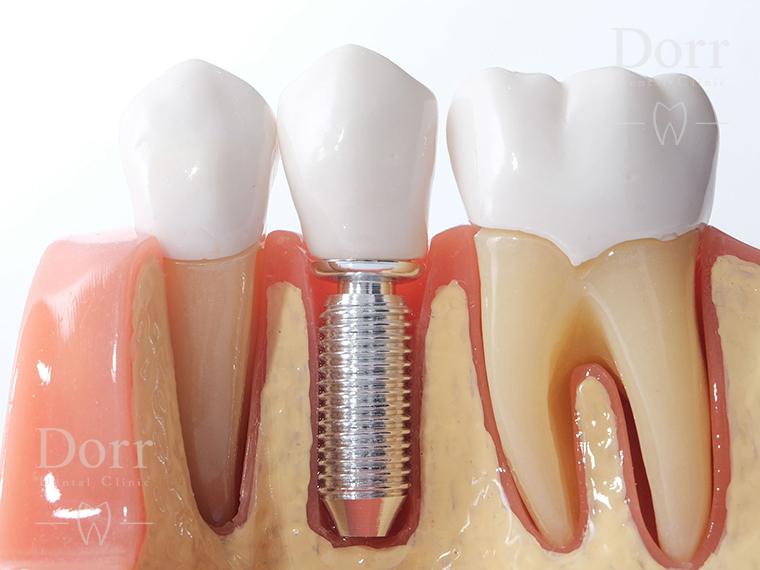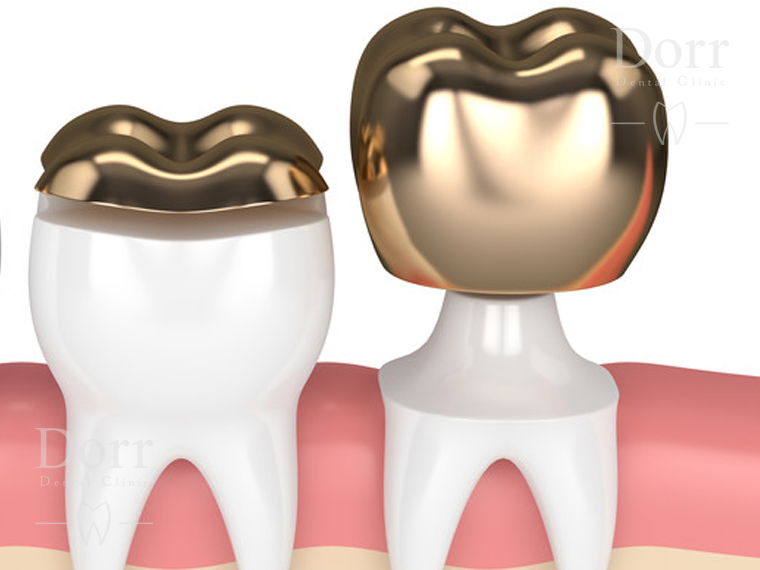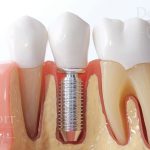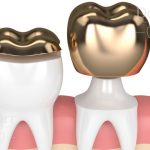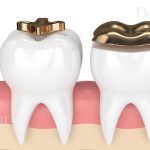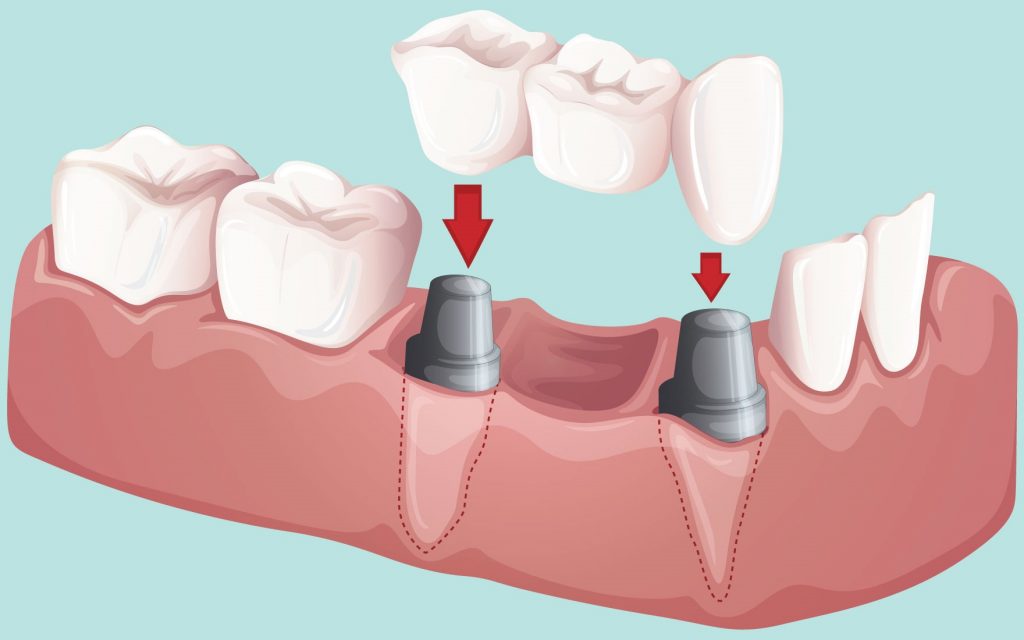

If you have missed one or more of your teeth and there is a gap between your teeth, dental bridge is an excellent option to fill the space. The missing teeth can cause speaking and eating problems, discomfort in your jaw, pain when chewing as well as poor nutrition and self-confidence. Usually a bridge consists of 2 crown and a false tooth which is held in place by the surrounding teeth on either side of the gap. Bridges are made of either gold, porcelain, alloys or combination of these materials.
Different types of dental bridge
There are four main types of bridge in order to fill the space of missing teeth. Your doctor can diagnose which type of bridge is the right option for you.
Traditional fixed bridge
This is the most common type of the bridge that is made of either porcelain fused to metal or ceramics. Traditional bridge consists of one or more fake teeth which are held in the space of missing teeth by crowns. These crowns attach to the surrounding teeth.
Cantilever bridge
This type of bridge is used when only one tooth is next to the missing tooth. It is not recommended for back teeth and mainly used for missing front teeth.
Maryland bonded bridges
It is a more conservative method. Maryland bridge is made of metal or porcelain framework to keep the fake tooth in place. Since this bridge is not held in place by crown, they are not very strong and they are not proper for teeth that have a lot of biting force. They only are used for front teeth. Actually they are a temporary treatment and usually used for young adults who have not finish growing.
Implant supported bridge
This bridge is suitable when more than one tooth is missed. They hold in place by implant and attach to the jawbone for maximum stability.
Dental bridge placement
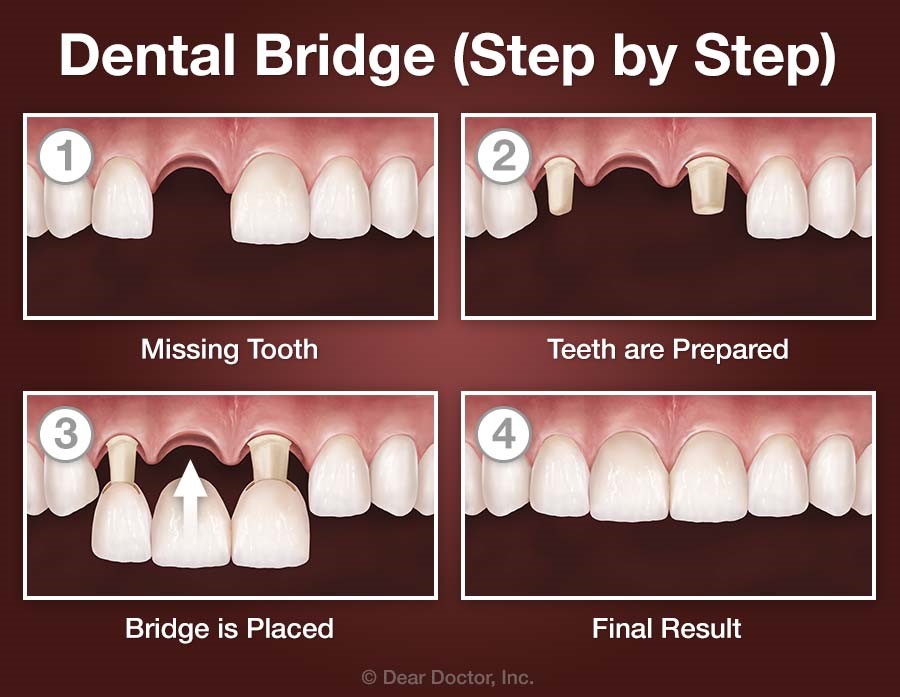
Usually the process of placing bridge takes two dental visit. In first session your dentist takes an impression of your teeth and send to the dental lab to prepare the final bridge. In this session your dentist prepares the surrounding teeth of the missing tooth in order to attach the final bridge to those teeth. He/she also set a temporary bridge in the place to protect the prepared teeth for final bridge.
In the second visit, your dentist will place, fit and adjust the final custom-made bridge in place. He/she will ask you to bite down a soft piece of foam to make the imprint and ensure that you are comfortable with your bridge.
Actually there is no recovery time after the procedure and you can eat normally as the bridge is placed in your mouth. During the procedure you don’t feel pain because use of the local anesthetic and if you feel any pain after the bridge placement you can take over the counter pain killer.
Benefits
Dental bridge has many advantages including:
- Provide you a beautiful smile
- Help prevent TMJ disorder
- Restore proper speaking and chewing
- Prevent of surrounding teeth loss
- Improve the biting problems by replacing the missing teeth
- Reduce the risk of bone loss
- Enable you to enjoy different types of diet
- Provide extra support for the facial structure
Risks
Although dental bridge is the best treatment method for patients who have missing teeth but this is also associated with some risks and side effects including:
- Bridges are not removable and it is difficult to keep them clean.
- There is possibility of collapse if the bridge span is too long or the surrounding teeth are not enough strong.
- There is an increasing risk of decay for neighboring teeth.
- Although bridge has maximum stability but sometimes need to be replaced.
- In rare cases, patients may have allergic reaction to the anesthetic or the restorative materials which are used in bridge.
There are also some temporary side effects with dental bridge such as tooth sensitivity, ptyalism (excess saliva), gum irritation and speech difficulties that will improve over the times.
The procedure to place your dental bridge
You will need 2 appointments to have your bridge prepared and placed on your teeth. Early before starting your bridge making process, your mouth is checked for any signs of tooth decay, crooked teeth, gum and jaw conditions to give you a better and picture perfect treatment plan. If there is no need for other dental treatments, you will head on to get your bridges. Dental bridge procedure steps:
- Your dentist prepares the neighboring teeth(abutment teeth) to make enough space for your bridge (first appointment)
- Then your dentist takes the impression of the prepared teeth and the missing teeth area to get the molds (first appointment). Dentists can use computer assisted design/manufacturing (CAD,CAM) to design and make the dental bridges
- Impressions are sent to the lab and you will be wearing temporary bridges to prevent any damages to your teeth while your dental bridge is being prepared
- You will visit the dentist for the placement and cementing your bridge in place (second appointment)
- Your dentist may ask you to visit within the following weeks to check that your bridge is fit in place
Maintenance
If you have proper oral hygiene and regular check up by your dentist, your dental bridge can last up to 15 year or even longer. Following are few tips for good oral health:
- Brush and floss your teeth twice a day or use between-the teeth cleaner to remove bacteria and plaque that stick on your teeth.
- Use of specific flossers, picks or little brushes that clean between your teeth and under your bridge.
- Try to eat healthy foods and avoid of sticky foods.
- You need to see your dentist for regular checkup.
- Use of oral care products that help you to keep your mouth healthy.
When one of your tooth is missed your bone may shrink and can affect the way your jawbone supports your cheeks and lips. It will influence your face and causes you look older. It also makes difficulty for eating, speech and biting. In this condition dental bridge is the best treatment option to fill the space and provide you a beautiful smile and appearance.
Ask from the doctor

